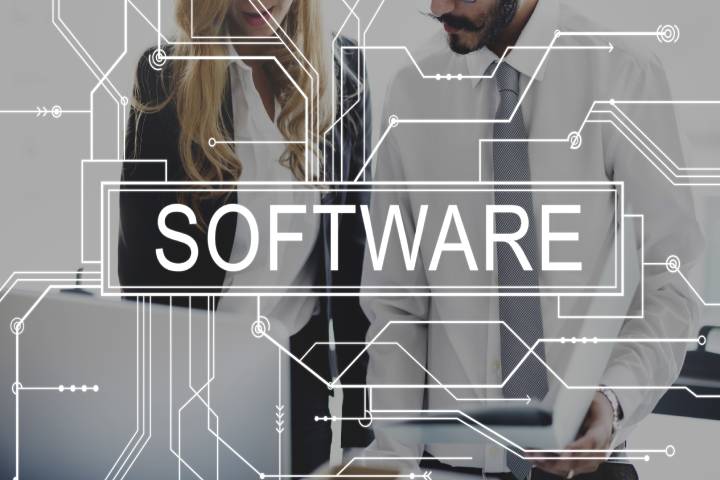From the mainframes of the 60s (those computers that took up practically a room) to the cloud of the 21st century, management software has continued to evolve. And along the way, they have been gaining speed, acquiring new features, and becoming much easier to use.
With the increasing introduction of artificial intelligence, machine learning, and natural language processing, the new generation of management software promises to be even more intelligent. These systems are going from being simple information processors to becoming trustworthy business assistants to analyze information and offer powerful insights that serve as support for decision-making.
These are some of the things we can expect from smart management software very shortly.
Table of Contents
The End of Manual Data Entry
Paper documents evaporate, and everything indicates that manual data entry will follow suit. As automation, Machine Learning, and Artificial Intelligence are integrated into systems, the need for human intervention will be practically nil.
Before, the automation of any process required a human programmer, many lines of code, and liters of coffee. But with the introduction of technologies like robotic process automation (RPA), things are changing rapidly.
Rather than mapping a process step by step, RPA tools, or bots, function as a kind of “peeping Tom.” They discreetly observe user actions (from clicks to data entry), understand the process rules, and then mimic precisely what humans have done. The monotonous and repetitive tasks are ideal candidates for automation through technology.
Invoice Processing, a Practical Case
Vendor invoices come in different formats: paper, Word documents, or PDFs attached to an email. Until now, it was necessary to manually transfer them to the billing system and then verify that there were no discrepancies.
Thanks to the RPA tools, the bots of the intelligent management software can detect new invoices, extract relevant data from each document, record the information in the system and notify suppliers by email. Everything automatically.
Invoice data can be extracted using Optical Character Recognition (OCR), enabling the conversion of text to electronic data. Jasmin is an intelligent management software that uses this technology and allows you to take pictures of expense invoices for automatic recording.
Automation at Its Finest
Process automation is advantageous not only because it reduces the time spent recording data but also because it minimizes the number of errors to which these processes are subjected. And when we add cognitive technologies, like Machine Learning, to the mix, things get interesting.
An example is integrating the email management software using artificial intelligence and natural language processing (NLP). For those less familiar with the term, PLN uses algorithms capable of analyzing and understanding human language.
In the future, thanks to this mix of technology, intelligent management software will be able to scan a user’s inbox to collect multiple requests from customers or suppliers, analyze the details of each message, and understand what action to take next. In addition, the system will also be able to use sentiment analysis (which determines the tone of a text or speech) to decide whether that request should take precedence over the others.
Increasingly Powerful Analytics And Insights
All companies (regardless of size) generate data. Many data. Data on sales, expenses, customers, inventory, among others. And somewhere in the middle of this pile of numbers, you have the answers that can help you develop and grow your business.
The problem is that most of us don’t know what to look for or what to do with the information we find. This is another of the areas where intelligent management software can be beneficial since it can provide us with more powerful analysis tools that allow faster and wiser decisions.
Also Read: The Advantages of Buying a Smart TV With Android
Delve Into Internal Data Analysis
Most of the current software already allows some analysis, such as comparing results month by month or year by year. But using artificial intelligence and advanced analytical techniques, it will be possible to determine, for example, what has been the profitability of a particular customer in the last five years or which customers represent the highest amount of revenue.
Using predictive analytics models, the system will be able to “observe” the sales history and detect customers at risk of leaving the company, predict results or even anticipate demand. Based on this data, the software will send alerts about the customers on which the company must continue betting or about the inventory needs concerning the sales forecast.
Leap “big Data.”
In addition to analyzing the company’s financial data, the management software can integrate analytical tools that allow the crossing of data from different sources. This will enable you to analyze weather forecasts, product or service evaluations, demographic data, among others, and correlate them with the financial data of your business to obtain even more valuable information.
Let’s look at a classic example: the sale of ice cream.
The demand for ice cream can increase up to 50% on hot days, while on gray and rainy days, it can be reduced by 20%. If there is a heatwave in May, likely, the company is not well supplied because the summer season only begins in June.
However, using weather forecasts and analyzing sales data from recent years, the management software can estimate the demand during the next heatwave in spring and recommend an increase in the ice cream stock. The result? More sales and balanced inventory levels.

